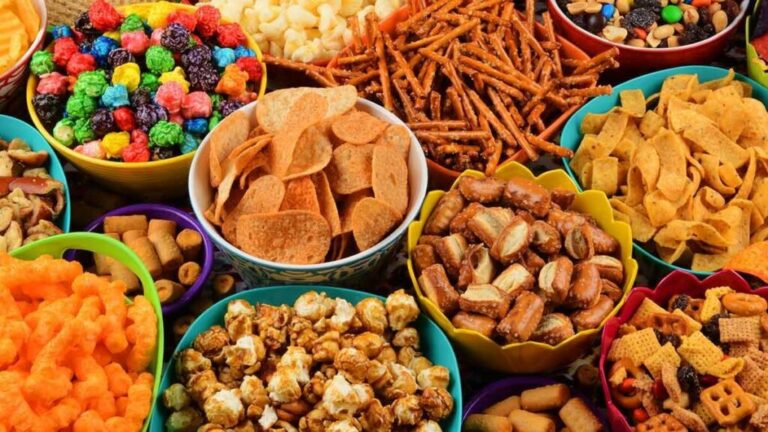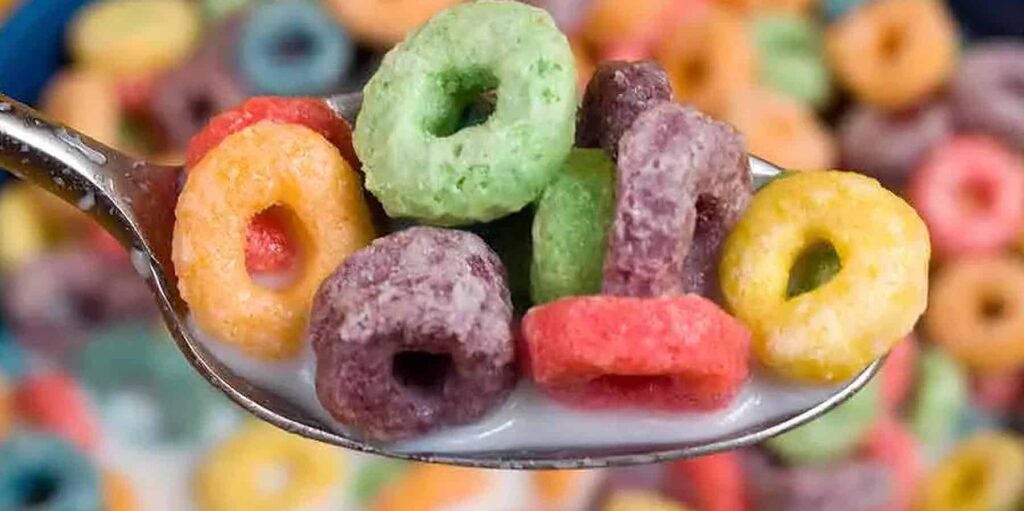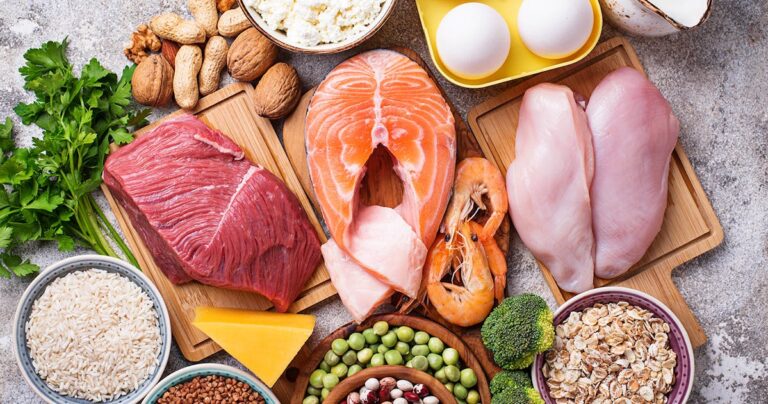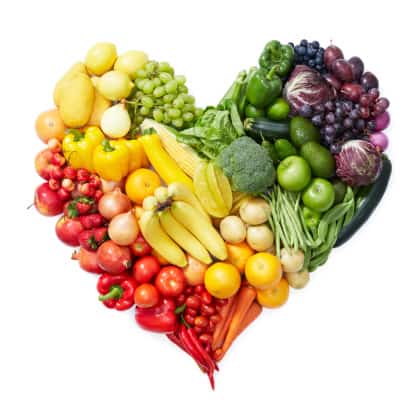March is nutrition month so, why not become knowledgable of what is in our food.
Food additives are basically anything added to food during production, processing, treatment, packaging, transportation, or storage. According to the Food and Drug Administration, there are more than 3,000 additives used in foods to—among other things—enhance flavor, texture, or shelf life. They range from simple ingredients like sugar or salt to chemical compounds with unpronounceable names. Even though most of those ingredients are safe to eat in limited quantities, some experts say that certain food additives are increasing our risk of obesity and can be damaging to our health. Some to be aware of are:
1 Sodium
Sodium is an increasingly controversial food additive. Last year, research from a university in Georgia found that teens who eat a high-sodium diet are more likely to be obese, regardless of other factors like total food intake or consumption of sugary beverages. Health Canada recommends keeping your daily sodium intake under 2,300 milligrams.
2. High Fructose Corn Syrup (HFCS)
HFCS is the sugary stuff made from a highly-processed, genetically-modified corn starch base, from which fructose is extracted. It is relatively cheap to make and thus saves manufacturers money rather than using regular sugar. Research suggests that our bodies treat HFCS differently than other sugars and that it’s associated with an increased risk of obesity and type 2 diabetes. Interestingly enough, obesity has in fact risen in North America in correlation with the increased use of HFCS. It may be more difficult to avoid than one thinks since it is used not just in the obvious sodas and candies, but also in products like bread and sauces such as pasta sauce.
3. Trans fats
Adding hydrogen to vegetable oil turns it into partially hydrogenated oil, more commonly known as a trans fat. While there are small amounts of trans fats found in animal foods, manufacturers began adding them in larger quantities to processed foods in the ’90s. Unfortunately, trans fats have been linked to an increased risk of heart disease and type 2 diabetes. In 2018 Health Canada banned the use of partially hydrogenated oils (PHOs) in foods to effectively reduce trans fats in the Canadian food supply to the lowest level possible, and help achieve the World Health Organization’s public health recommendation to reduce the intake of trans fats to less than 1% of total energy intake. With the ban in effect, it is now illegal for manufacturers to add artificial trans fats to their products. The ban applies to all foods produced for sale in Canada including imported products and foods prepared and served in restaurants and food service establishments and as of September 2020, all artificially produced trans fat will be removed from the food supply. Having said this it is good to be aware of the impact of trans fats as they remain in use outside of Canada.
4. Emulsifiers
Emulsifying ingredients like cellulose and polysorbate are used in a wide variety of processed foods in order to improve texture. They help mix together ingredients like oil and water that would normally separate. The research is early, but a study published in Nature found that emulsifiers affect the gut bacteria of lab mice, increasing inflammation and metabolic syndrome, which is associated with higher obesity risks.
5. Sodium Benzoate
Sodium benzoate is a commonly used preservative used in a wide variety of processed foods such as fizzy drinks and sour preserved foods, such as pickles and salad dressings. Sodium benzoate has been shown to be a potential trigger for hyperactivity in children and ADHD in all ages. The combination with vitamin C or with artificial sweeteners causes the substance to change into benzene that can be carcinogenic.
Generally speaking, this is a food additive to avoid entirely. Choose carbonated drinks that aren’t preserved artificially or just avoid these types of drinks altogether. Drink water, wholesome juices, herbal teas, or other drinks that are part of a healthy, whole food diet.
5. Nitrates and Nitrites
These food additives are used mainly as preservatives in processed meats—like bacon, hot dogs, and deli meats. It is used as a preservative, as well as for flavoring and coloring (it stabilizes the red color of cured meats, preventing them from turning grey) and also hinders the growth of bacteria that may cause botulism.
When these foods are cooked at high heat, like when you fry bacon or grill a hot dog, or when they mix with stomach acid during digestion, the added nitrites can generate nitrosamines. Studies now show that nitrites and nitrosamines might be linked to increased rates of type 1 diabetes, as well as many different types of cancer.
Look for bacon products that contain ascorbic acid or erythorbic acid; both are safe additives that help inhibit the potentially dangerous reaction.
6. Monosodium Glutamate (MSG)
MSG is an amino acid used as a flavor enhancer in soups, salad dressings, chips, frozen entrees, and many restaurant foods particularly Chinese. MSG is known as an excitotoxin, a substance that overexcites cells to the point of damage or death. Studies show that regular consumption of MSG may result in adverse side effects which include depression, disorientation, eye damage, fatigue, headaches, and obesity. MSG affects the neurological pathways of the brain and disengages the “I’m full” function which explains the effects of weight gain.
Many people actually have a sensitivity to it and can have reactions. These symptoms often include headaches, numbness, nasal stuffiness, and sweating. If you’re in tune with your body and notice that you feel bad after eating foods with MSG, it’s probably a good idea to start skipping it.
7. Common Food Dyes
Artificial colors are often used to make foods bright and vibrant, especially in products geared toward children. While natural dyes derived from plants (such as beets) are safe, artificial dyes, often derived from coal tar, are more cost-effective and therefore used more often. Though studies on artificial dyes have generally focused on cancers that have led to a handful of bans, scientists are now also researching their effects on children, such as disruptive behavior, attention deficit, and hyperactivity disorder, as well as learning disabilities. These are some of the most questionable synthetic dyes still on the market but note Canadian law does not require companies to list which dyes they use in their products; they only need to indicate “color” as an ingredient.
- Blue #1 and Blue #2 (E133)
- Often found candy, cereal, soft drinks, sports drinks, and pet foods. It is banned in Norway, Finland, and France. May cause chromosomal damage and increase cancer risk. Blue #2 may cause brain tumors in male mice.
- Red dye # 3 (also Red #40 – a more current dye) (E124)
- Found in fruit cocktails, maraschino cherries, cherry pie mix, ice cream, candy, and bakery products. Banned in 1990 after years of debate from use in many foods and cosmetics. This dye continues to be on the market worldwide. It has been proven to cause thyroid cancer and chromosomal damage in laboratory animals may also interfere with brain-nerve transmission.
- Yellow #6 (E110) and Yellow Tartrazine (E102)
- Found in American cheese, macaroni and cheese, candy and carbonated beverages, lemonade, and more. Banned in Norway and Sweden. Causes increases in the number of kidney and adrenal gland tumors in laboratory animals and may cause chromosomal damage.
8. Artificial Sweeteners
These sugar substitutes, such as acesulfame potassium (Ace K), aspartame, and sucralose, are much sweeter than sugar and have few or no calories.
Because they’re used in “diet” foods, one may think that if you don’t eat such products, you aren’t consuming any artificial sweeteners. But some, especially sucralose, are showing up in a variety of regular products not necessarily labeled as “diet” or “low calorie” so reading a label is key.
Studies have shown that aspartame and other non-caloric sweeteners are actually associated with weight gain and researchers suggest it might be that sweet tastes increase our appetite, no matter where the sweetness comes from.
Some research suggests that artificial sweeteners may be associated with an increased risk of heart disease and type 2 diabetes, and a growing body of evidence suggests they can be harmful to the gut microbiome.
8. Sorbitol
Sorbitol is a sugar alcohol that has about half the calories of sugar but also about half the sweetness. It is used as a sweetener in sugar-free versions of foods like candy, cookies, and gum, as well as an emulsifier and anti-caking agent in some products. But it also occurs naturally in some dried fruits—particularly prunes. Sorbitol brings water into the colon and acts as a laxative and at high doses, it can have unwanted side effects, such as bloating, gas, and diarrhea.
9. Phosphates
Phosphates are a form of phosphorus, a mineral that supports bone health. But phosphorus-containing additives, such as phosphoric acid and disodium phosphate, are found in a variety of processed foods including soda, baked goods, dairy products, and fast food. Phosphorus from additives is more readily absorbed than when it occurs naturally in food.
High phosphorus intake is hazardous for people with kidney disease or those at risk for kidney disease. If kidney function is impaired, getting too much phosphorus puts extra strain on the kidneys to try to excrete it. Even those with healthy kidneys should be cautious about eating too many foods with phosphate additives. Too much phosphorus can bind to calcium, pulling it from bones and leaving them brittle. And researchers have found a link between high phosphate levels and increased cardiovascular risk.
10. Carrageenan
Carrageenan is a hard-to-pronounce additive that is used in a lot of vegan and natural food products. It’s derived from Irish moss (a type of seaweed), which makes it sound great and healthy. Some studies link it to cancer, while other researchers say that those studies were poorly constructed. There are a lot of conflicting arguments when it comes to carrageenan. There is another type of carrageenan that is considered degraded and is called poligeenan. This type is absolutely shown to cause cancer in mice. However, in its undegraded form, carrageenan seems to be a risk for cancer but there’s no specific proof one way or the other. Unfortunately, current research on the effects of carrageenan is still very limited, and more studies are needed to understand how it may affect people.
That said, carrageenan is known for its inflammatory properties and for causing stomach ulcers and other digestive upsets.
While certain food additives have been linked to some pretty concerning side effects, there are plenty of others that can be safely consumed as part of a healthy diet. Begin reading the ingredient labels when grocery shopping to take control of your diet and determine what’s really being added to your favorite foods.
Ideally, try cutting back on processed and packaged foods and incorporating more fresh ingredients into your diet to minimize your intake of food additives.
If you have questions on these or how to incorporate a more natural approach to your health, call our West Block location and book some time with our in-house Naturopath, Dr. Chi Hung La.





